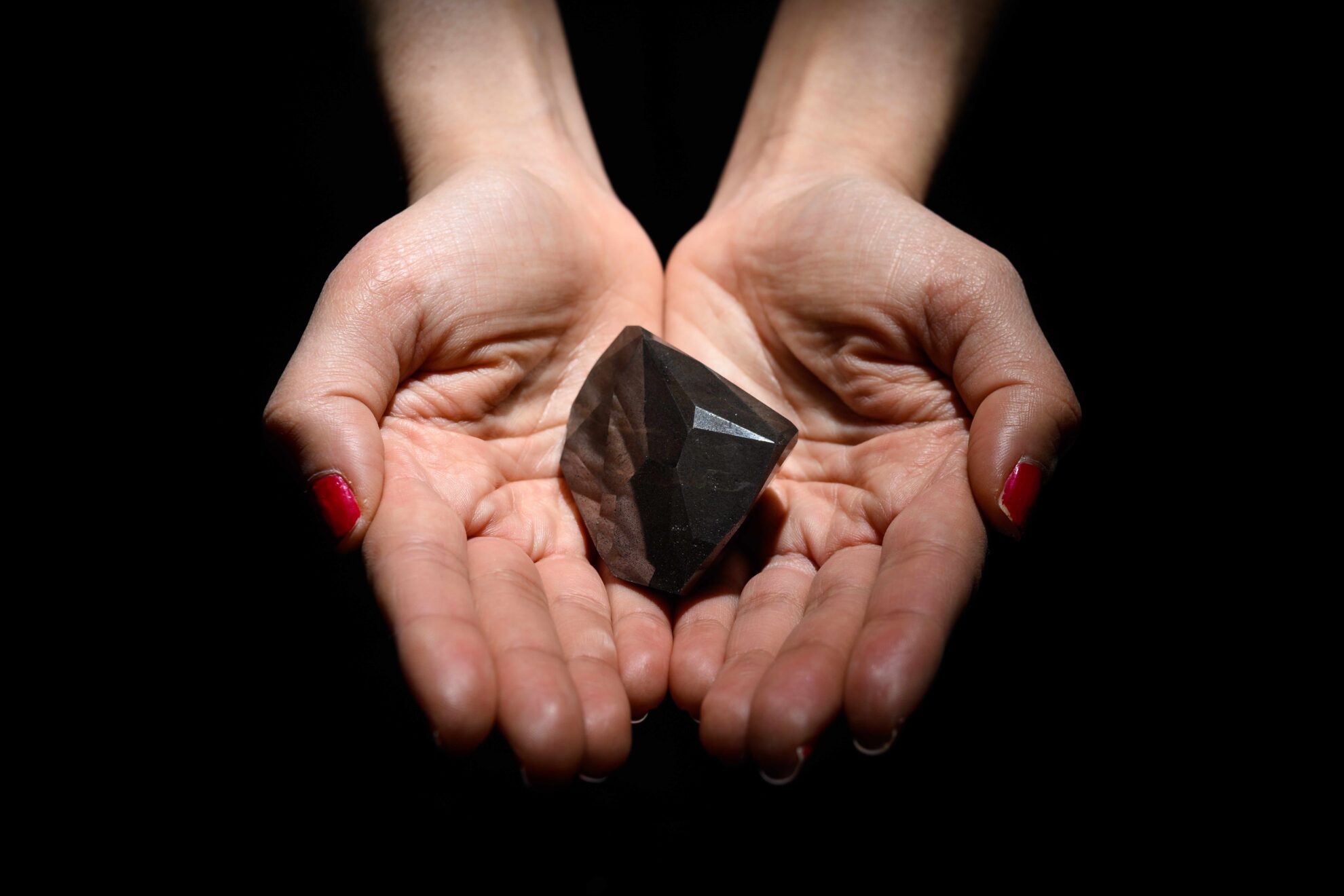Sotheby’s Sells 555.55-ct Enigma Diamond for $4.3m
Sotheby’s sold the 55-sided, 555.55-ct Enigma diamond for $4.3 million. It’s the largest natural black diamond and largest cut diamond in the world.
1 Minute Read
Sotheby's describes the Enigma as a fancy, natural color black diamond with 55 facets. It further states that the Enigma is the largest fancy black natural diamond in the world as of 2004 and the largest cut diamond in the world as of 2006. Experts speculate that the Enigma diamond came from an asteroid.
The seller reports to Sotheby's that the rough, purchased in the late 1990s, weighed over 800 carats. It then took three years to facet the stone into a design inspired by the Hamsa. This Middle Eastern palm symbol represents blessings, power, and strength and also offers protection from the evil eye.
Although Sotheby's does state that the Enigma is a rare carbonado, most media are reporting the Enigma as a black diamond. However, black diamonds and carbonados are different. A carbonado is more accurately described as a polycrystalline or aggregate material of amorphous carbon, graphite, and diamond. This aggregate material possesses greater durability than diamond and has primarily industrial uses.
The origin of carbonados also differs from that of diamonds. Unlike diamonds, carbonados never occur in igneous kimberlite rock formed deep within the Earth. Instead, they occur in alluvial, sedimentary deposits. The micro-diamonds present in carbonado (typically smaller than 20 microns or 20 millionths of a meter) lack traces of minerals found deep in the Earth's mantle, typical of other diamonds. However, they do possess traces of nitrogen, hydrogen, and osbornite (a mineral otherwise found only in meteors). This suggests carbonados originated in outer space, which supports expert speculation that the Enigma originated from an asteroid.
Lisa Rosen
Related Articles
Diamond Value, Price, and Jewelry Information
What Customers Value Most in the Jewelry Insurance Buying Experience
An Interview with “Diamond Wizard” Maarten de Witte: Part 4
An Interview with “Diamond Wizard” Maarten de Witte: Part 2
Latest Articles
Basic Business Rules: Buying Rough
Peridot Value, Price, and Jewelry Information
Traditional Diamond Cut Grading Methods
Cutting a 294-ct Trilliant Morganite: An Interview with Steve Moriarty
Never Stop Learning
When you join the IGS community, you get trusted diamond & gemstone information when you need it.
Get Gemology Insights
Get started with the International Gem Society’s free guide to gemstone identification. Join our weekly newsletter & get a free copy of the Gem ID Checklist!
